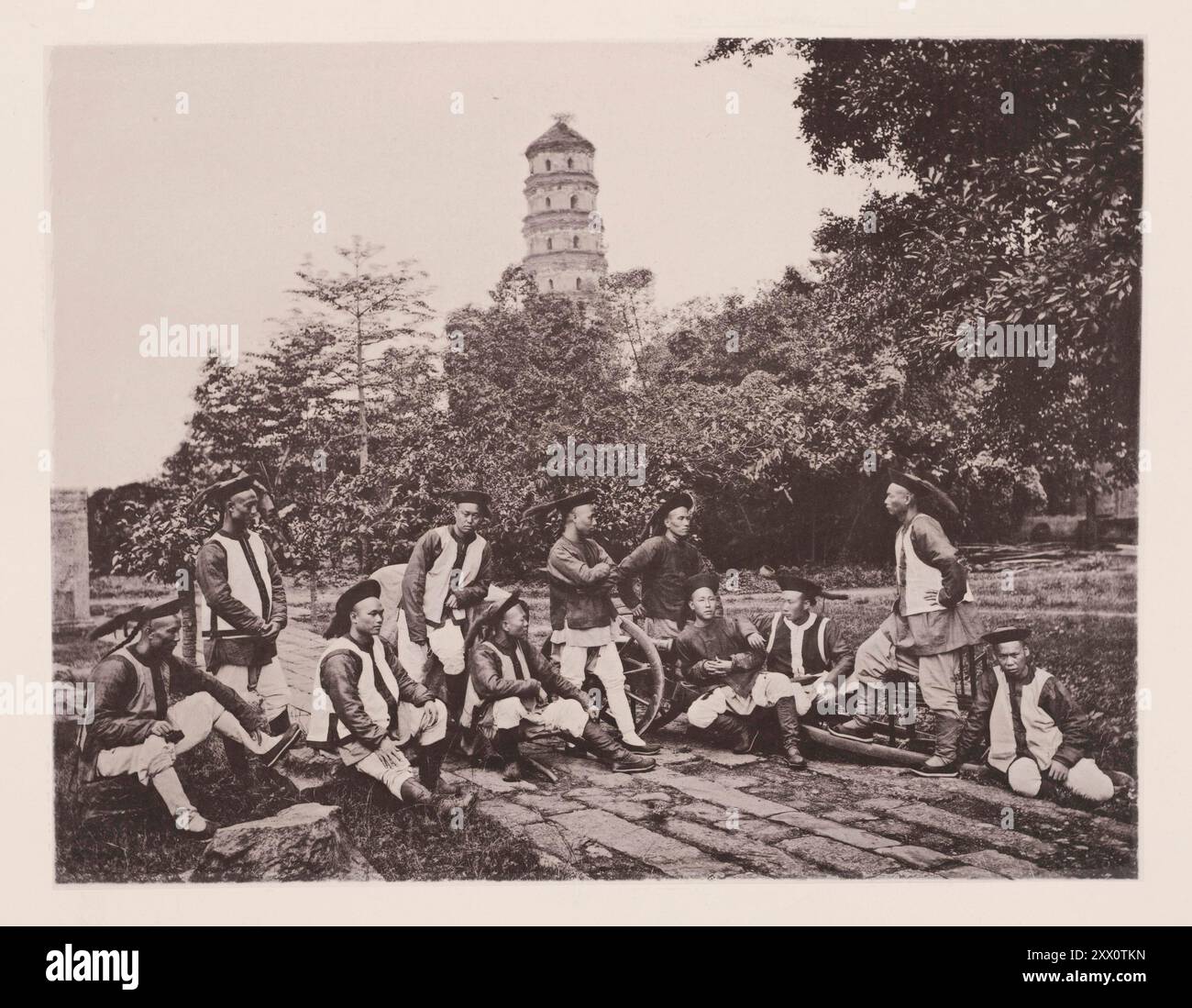Vintage photo of Tartar soldiers in Canton. The Manchus, commonly called Tartars. The banner-men of Canton number 1,800, many of them being extremely poor: for although their nominal pay is good, it never reaches the recipient in full. Thoroughly drilled and disciplined, and with a commissariat that would provide effectively for their wants, they would still make good soldiers. Under Jui-lin, the present able governor-general of the two Kwang provinces a number of Tartar and Chinese soldiers have been instructed in the system of European drill, and in the use of foreign arms. The reader cann

Image details
Contributor:
mccool / Alamy Stock PhotoImage ID:
2XX0TKNFile size:
44.7 MB (1.8 MB Compressed download)Releases:
Model - no | Property - noDo I need a release?Dimensions:
4487 x 3485 px | 38 x 29.5 cm | 15 x 11.6 inches | 300dpiDate taken:
23 January 2019More information:
This image is a public domain image, which means either that copyright has expired in the image or the copyright holder has waived their copyright. Alamy charges you a fee for access to the high resolution copy of the image.
This image could have imperfections as it’s either historical or reportage.
Vintage photo of Tartar soldiers in Canton. The Manchus, commonly called Tartars. The banner-men of Canton number 1, 800, many of them being extremely poor: for although their nominal pay is good, it never reaches the recipient in full. Thoroughly drilled and disciplined, and with a commissariat that would provide effectively for their wants, they would still make good soldiers. Under Jui-lin, the present able governor-general of the two Kwang provinces a number of Tartar and Chinese soldiers have been instructed in the system of European drill, and in the use of foreign arms. The reader cannot fail to be struck with the fine manly build and soldierly appearance of the Tartar artillery-men shown in the photograph. These men formed the native guard of Sir D. B. Robertson, our consul at Canton.